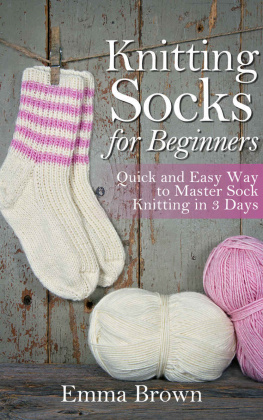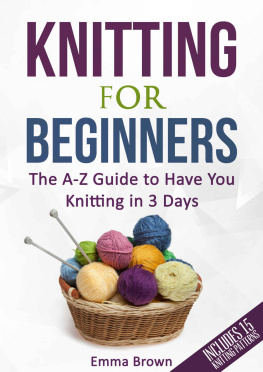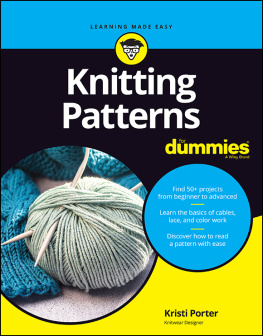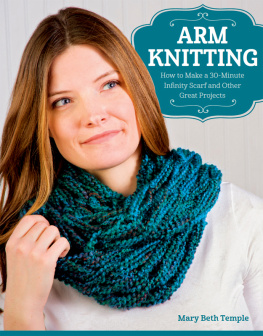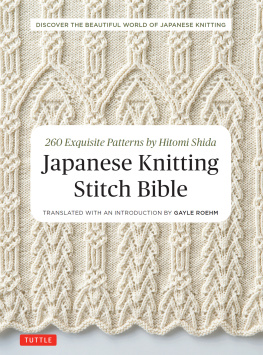

Many thanks to knitters and nonknittersyour advice, help, and support was invaluable: Rebecca, Kathy, Dad, Penny, Keith, Chris Lee, Nicole and the rest of the Brooklyn pals, Aunt Linda, Morgan, Bernhard, and Mikyla, Jodi, and Beth at Chronicle.
This book is dedicated to Doron, Mom, and Aunt Babe.
Text copyright 2002 by Kris Percival
Photographs copyright 2002 by France Ruffenach
Illustrations copyright 2002 by Randi Katzman
All rights reserved.
No part of this book may be reproduced in any form without
written permission from the publisher.
ISBN 978-1-4521-3369-0
Library of Congress Cataloging-in-Publication Data available.
ISBN: 0-8118-3533-2
Designed by Efrat Rafaeli
Illustrations by Randi Katzman, Creative Freelancers
Styling by Aaron Hom, Zenobia
Chronicle Books LLC
680 Second Street
San Francisco, California 94107
www.chroniclebooks.com
introduction
Have you noticed that hand-knit sweaters, scarves, mittens, and hats feel cozier and softer than store-bought items?
For centuries, hand-made knits have warmed the hands, the feet, and the veritable cockles of the heart. Mothers have long passed the craft of knitting on to their daughters, and their daughters have passed it to their daughters. At times, men too have gotten into the act. In earlier seafaring days, sailors commonly took yarn and needles to sea and knit away below-decks. It has only been in the past century, with the availability of mass-produced knits, that the art of knitting has fallen out of general knowledge. What once used to be a skill as common and necessary as cooking is now a soothing diversion and a comforting connection to days gone by.
Today, you can walk into any clothing store and find beautiful knit scarves and sweatersall ready for you to purchase and wear. So the question is, why knit? The answer is simple: Knitting is fun. From the first trip to the yarn store, where shelves are piled high with soft fibers of every color and texture, to the stolen moments of peace when a knitter loses herself in the soothing rhythms of the work, knitting is a creative, meditative, and calming pursuit. Each knitter brings her own sense of color and style to the process, and the finished pieces are made that much warmer by the knitters hands.
Perhaps you have admired others knits from the sidelines, or maybe youre a confirmed knitter in search of new ideas to get your well-worn needles clacking. In Knitting Pretty , weve taken pains to offer knitting projects that are as accessible as they are enjoyable. The Getting Started chapter gives an overview of the simple materials neededyarn, needles, and other accoutrements. In How to Knit youll find simple, straightforward instructions for all the techniques youll need to know to complete the projects in this book.
, and the Resources section at the back of the book will get you started in your search for yarn, tools, and patterns.
To make things even clearer, the projects are divided into six chapters. First Projects is for true beginners and offers straightforward projects like a simple bookmark. Old Favorites features snuggly stand-bys that fit every winter need, such as a super-long ribbed scarf and a pair of warm mittens. From there its on to Adorable Knits for Kids of All Ages, where you can learn how to make silly clothes for sock puppets or a sassy tube top. Modern-Day Accoutrements features a few of the must-haves of modern life, such as a cell phone cozy and a hipster kerchief. Turn to Creative Home Decor to add some glad to your pad. Whip up a colorful pillow cover, or make a paperweight for your desk. Finally, Tops of All Types includes all the information you need to make a swishy, swinging poncho or a simple, cozy sweater.
The patterns in these pages are projects in their own right, but each is also only a starting point for your own ideas. Feel free to improvise as you go. You can make the same project many times, always with a different end result. Let yourself experience the joy, creativity, and color of knitting. Grab some needles and yarn, and lets get started!
Demo version limitation, this page not show up.
chapter
how to knit
This chapter includes instructions for all the techniques youll need to know to complete the projects in this book. Youll learn now to cast on and bind off, knit and purl, increase, decrease, and yarn over. It explains the difference between knitting on two needles and knitting in the round. It also offers advice for troubleshooting and where to go for help if you get stuck.
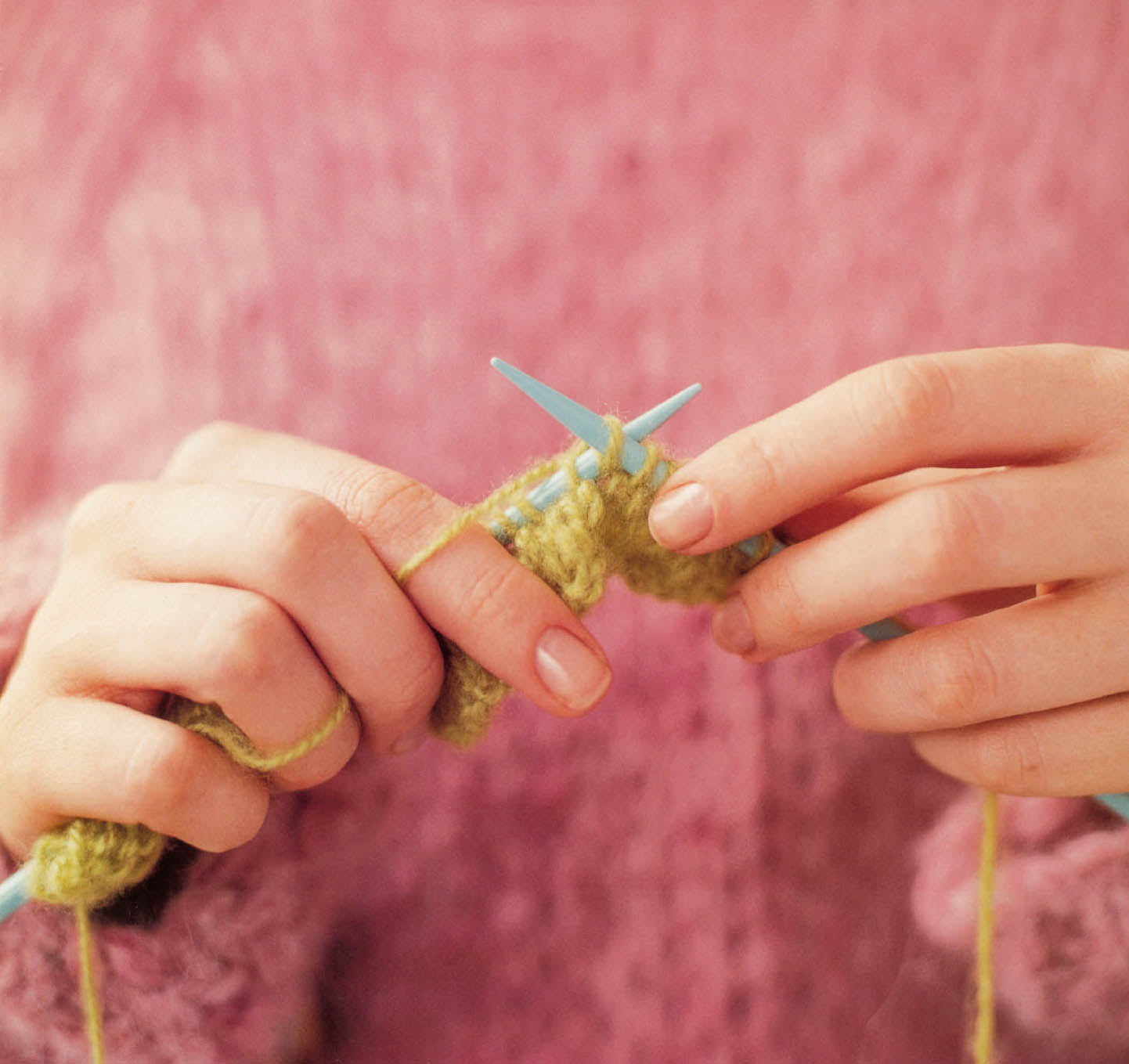
holding the needles
The first step in learning to knit is deciding how to hold the needles. There are a few variations; experiment until you find the way that feels most comfortable. The directions below are for both left- and right-handed knitters.
left hand
The needle holding the stitches rests in your left hand. The stitch nearest the end should be about 1 inch from the needles tip. Hold the needle with your index finger at the first stitch. Or, if youre knitting Continental style, hold the needle with your middle finger at the first stitch . Your thumb rests on the opposite side of the needle to stabilize it. The remaining three fingers curl under to balance the needle.
right hand
Rest your index finger on the top of the needle, about 2 inches from the tip. Place your thumb about an inch lower, on the opposite side. Lightly curl the remaining three fingers lower around the needle.
positioning the yarn
The two most common methods of knitting are American and Continental. In the American style, you hold and move the yarn with your right hand. In the Continental style, you hold and move the yarn with your left hand. Try both to see which you feel more comfortable with. Eventually you will want to know both styles, as its helpful for Fair Isle knitting, in which you work with two colors of yarn at a time.
american style
The ball of yarn should be to your right. Rest the strand that leads from your left needle to the ball on top of your right index finger, then wrap it under your middle finger, over your third finger, and let the rest trail down to your ball under the little finger .
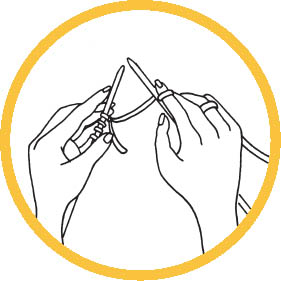
figure 1a, how to hold the needles and yarn, positioning the yarn American style
continental style
Place the ball of yarn to your left and weave the yarn that leads from your left needle to the ball over your left index finger, under the middle finger, over the third finger, and let it trail down to the ball under the little finger . If you are left-handed, you may find this method easier.
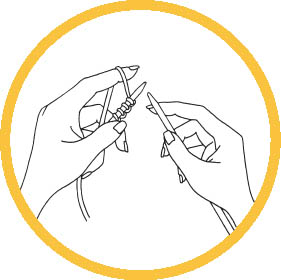
figure 1b
There are many other ways to hold the yarn. It needs to be neither too loose nor too tight as you work with it. Some people like to wrap the yarn loosely around a finger to help maintain the correct tension. Experiment and do what works best for you.
Next page

